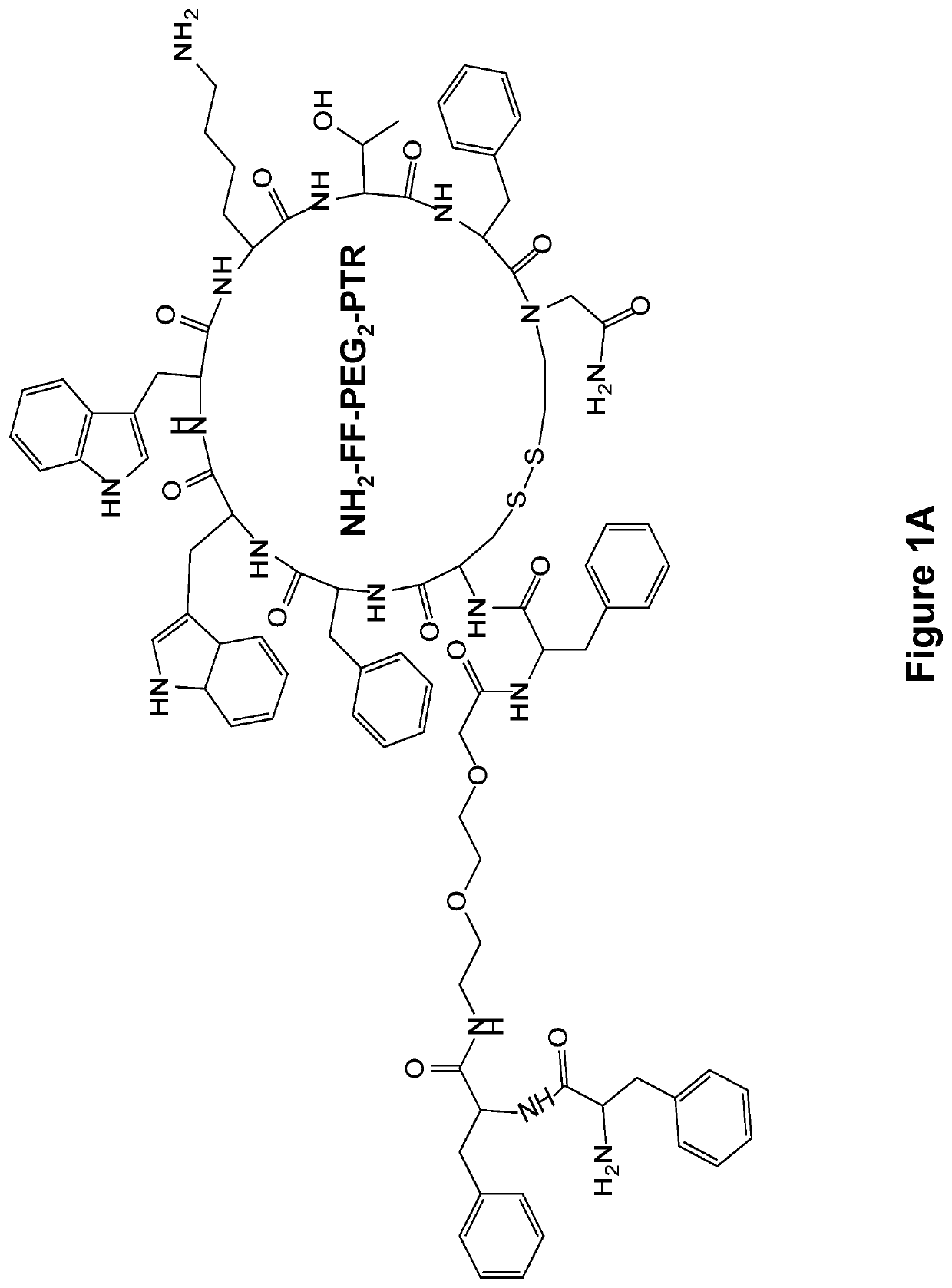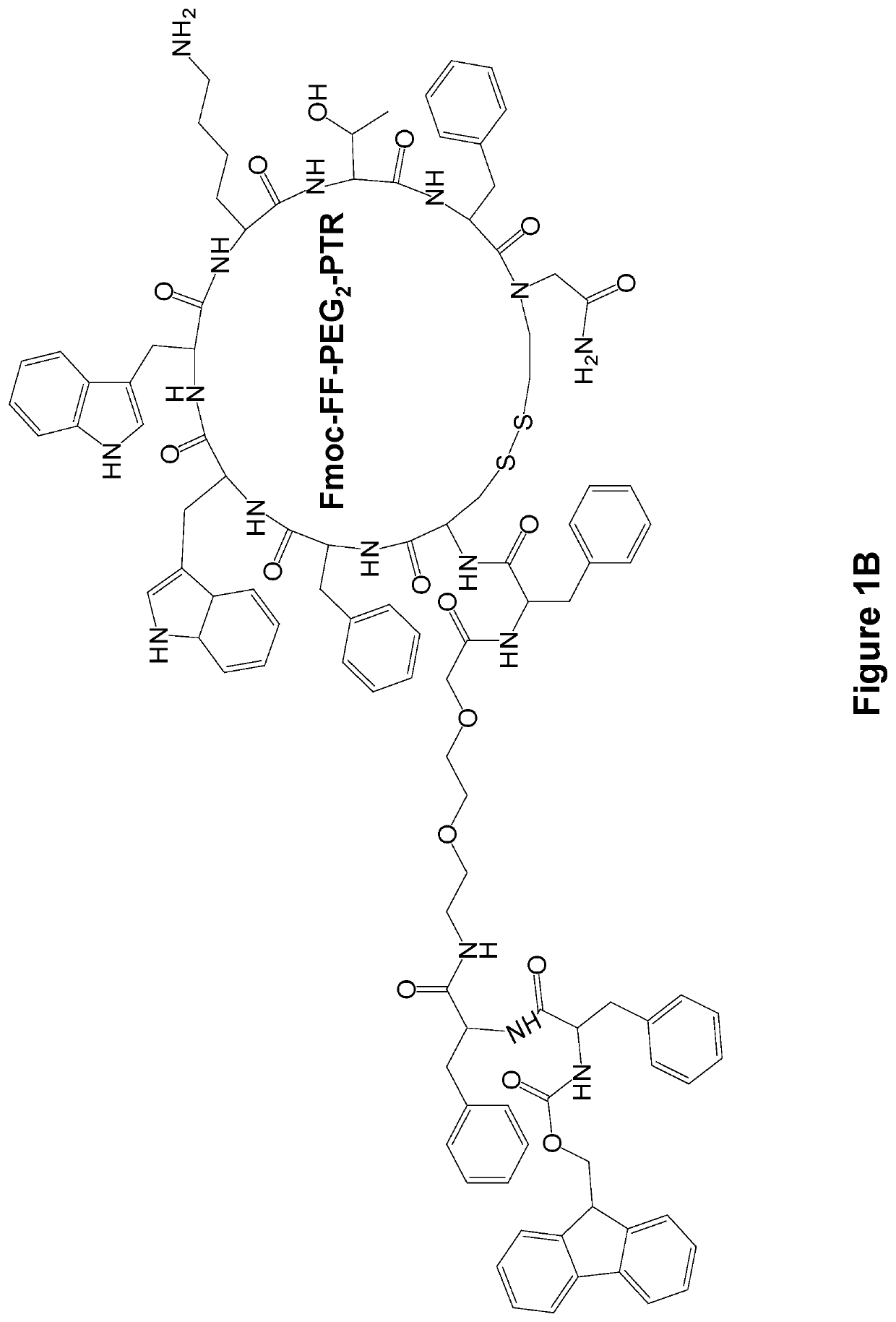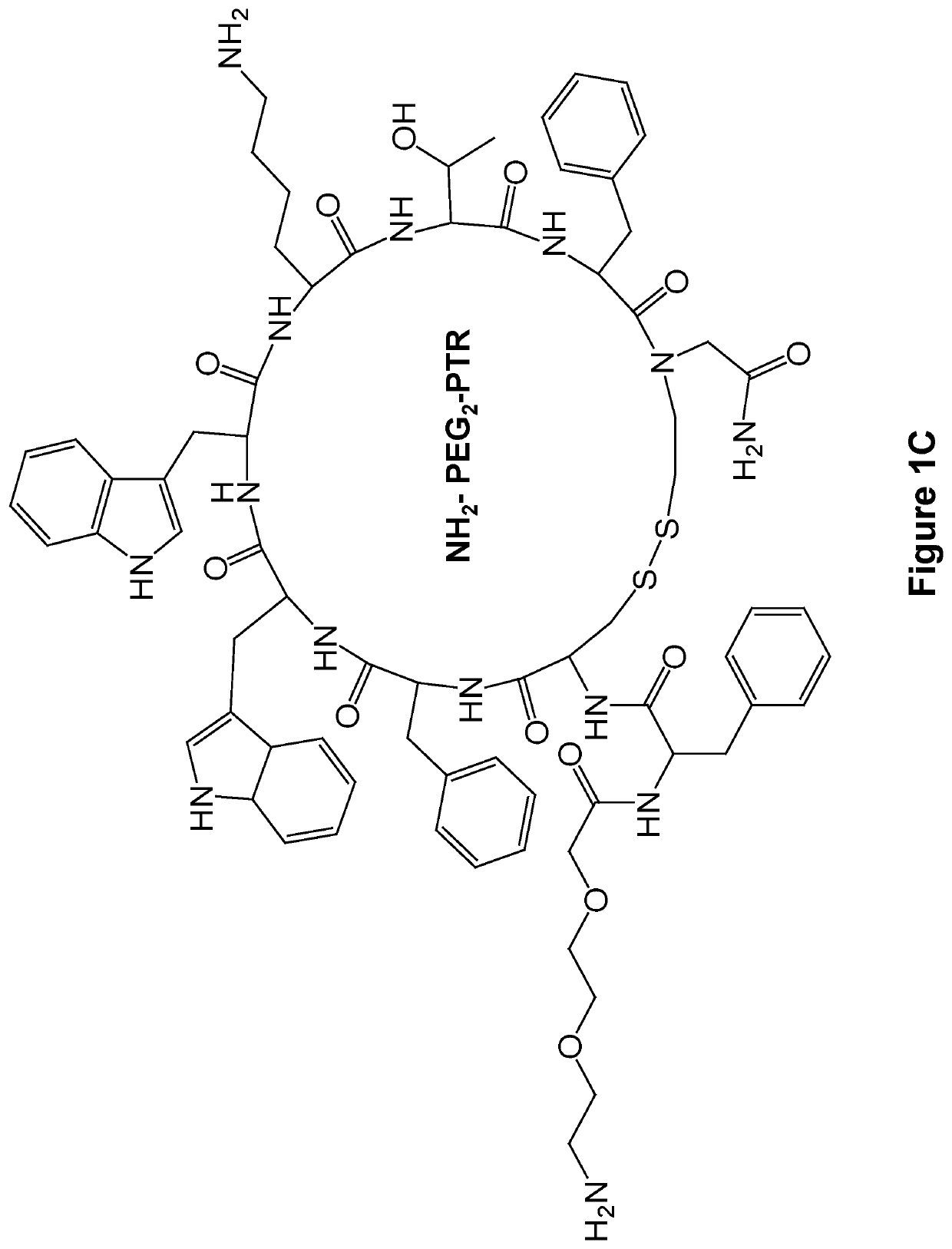Formation of functionalized cancer targeting nanoparticles by supramolecular co-assembly
a technology of supramolecular co-assembly and cancer, which is applied in the direction of powder delivery, peptide/protein ingredients, non-active ingredients of pharmaceuticals, etc., can solve the problems of short half-life and difficulty in employing peptides as therapeutic agents
- Summary
- Abstract
- Description
- Claims
- Application Information
AI Technical Summary
Benefits of technology
Problems solved by technology
Method used
Image
Examples
example 1
Design and Synthesis of Diphenylalanine-Somatostatin (FF-PTR) Peptides
[0136]The FF-PTR peptides were designed and synthesized by solid phase peptide synthesis (SPPS) using disulfide backbone cyclization. The somatostatin analogs were synthesized according to the highly stable and tumor-selective PTR 3207 sequence[22] and conjugated to the FF via PEG2 linker (FIG. 1a). In addition, Fmoc amine protecting group was employed to allow the formation of varied nanostructures (FIG. 1b). Fmoc-protected amino acids and short peptides, such as the Fmoc-FF and other Fmoc dipeptides, have been shown to form rigid macroscopic nanostructures and hydrogels. A control analog lacking the FF moiety was also synthesized. As expected, it did not form any ordered nanostructures (FIG. 1c).
[0137]Nanotubes were formed by solvent switch method in which FF peptide powder was dissolved in an organic solvent, hexafluoro-iso-propanol (HFIP), then diluted into water.[1] Thus, FF-PTRs were dissolved in HFIP to all...
example 2
Co-Assembly of FF-PTR Peptides with Boc-FF
[0138]Fmoc-FF-PEG2-PTR prepared per Example 1 was co-assembled with Boc-FF to form supramolecular co-polymers, formed on the basis of non-covalent bonds. The co-assembly is envisioned to enable separation and physical distance between the cell binding moieties. When Boc-FF is dissolved in 10% ethanol / H2O, mostly nanotubes are formed (FIG. 4d).[20-24] However, mixing both Boc-FF and Fmoc-FF-PEG2-PTR, under the same conditions at different molar ratios of 2:1, 4:1 and 10:1, resulted in the mere assembly of spherical structures as confirmed by TEM analysis (FIG. 4e-4g). The peptides co-assemblies were prepared at different molar ratios of 1:2, (1:4) and 1:10. The nanospheres ultrastructures were confirmed by TEM analysis (FIG. 4e-4g). Based on these experiments, it was concluded that the ability of Fmoc-FF-PEG2-PTR to form spheres had also affected the spherical co-assembly of Boc-FF peptide. As expected, co-assembly of peptide lacking the FF m...
example 3
Use of Fmoc-FF-PEG2-PTR and Fmoc-FF-PEG2-PTR:Boc-FF (1:4) Co-Assembled Nanospheres as Encapsulation Agents
[0142]Encapsulation of therapeutic and contrast agents into nanospheres provides efficient drug delivery and imaging capacity while maintaining reduced side effects. Thus, the nanospheres formed by the assembly of Fmoc-FF-PEG2-PTR and by the Fmoc-FF-PEG2-PTR:Boc-FF (1:4) co-assembled nanospheres, were tested for their ability to encapsulate carboxyfluorescein (CF) and gold nanoparticles (AuNPs). Carboxyfluorescein, a common fluorescent tracer agent, was also encapsulated within the peptide assemblies as can be observed in the stimulated emission depletion (STED) microscopy images (FIG. 7a, 7b). The carboxyfluorescein was encapsulated in both Fmoc-FF-PEG2-PTR (FIG. 7a) and Fmoc-FF-PEG2-PTR:Boc-FF (1:4) nanospheres (FIG. 7b). In addition, AuNPs are the most commonly used inorganic nanoparticles for biological applications, due to their physical and chemical properties. AuNPs have ...
PUM
| Property | Measurement | Unit |
|---|---|---|
| diameter | aaaaa | aaaaa |
| diameter | aaaaa | aaaaa |
| diameter | aaaaa | aaaaa |
Abstract
Description
Claims
Application Information
 Login to View More
Login to View More - R&D
- Intellectual Property
- Life Sciences
- Materials
- Tech Scout
- Unparalleled Data Quality
- Higher Quality Content
- 60% Fewer Hallucinations
Browse by: Latest US Patents, China's latest patents, Technical Efficacy Thesaurus, Application Domain, Technology Topic, Popular Technical Reports.
© 2025 PatSnap. All rights reserved.Legal|Privacy policy|Modern Slavery Act Transparency Statement|Sitemap|About US| Contact US: help@patsnap.com



